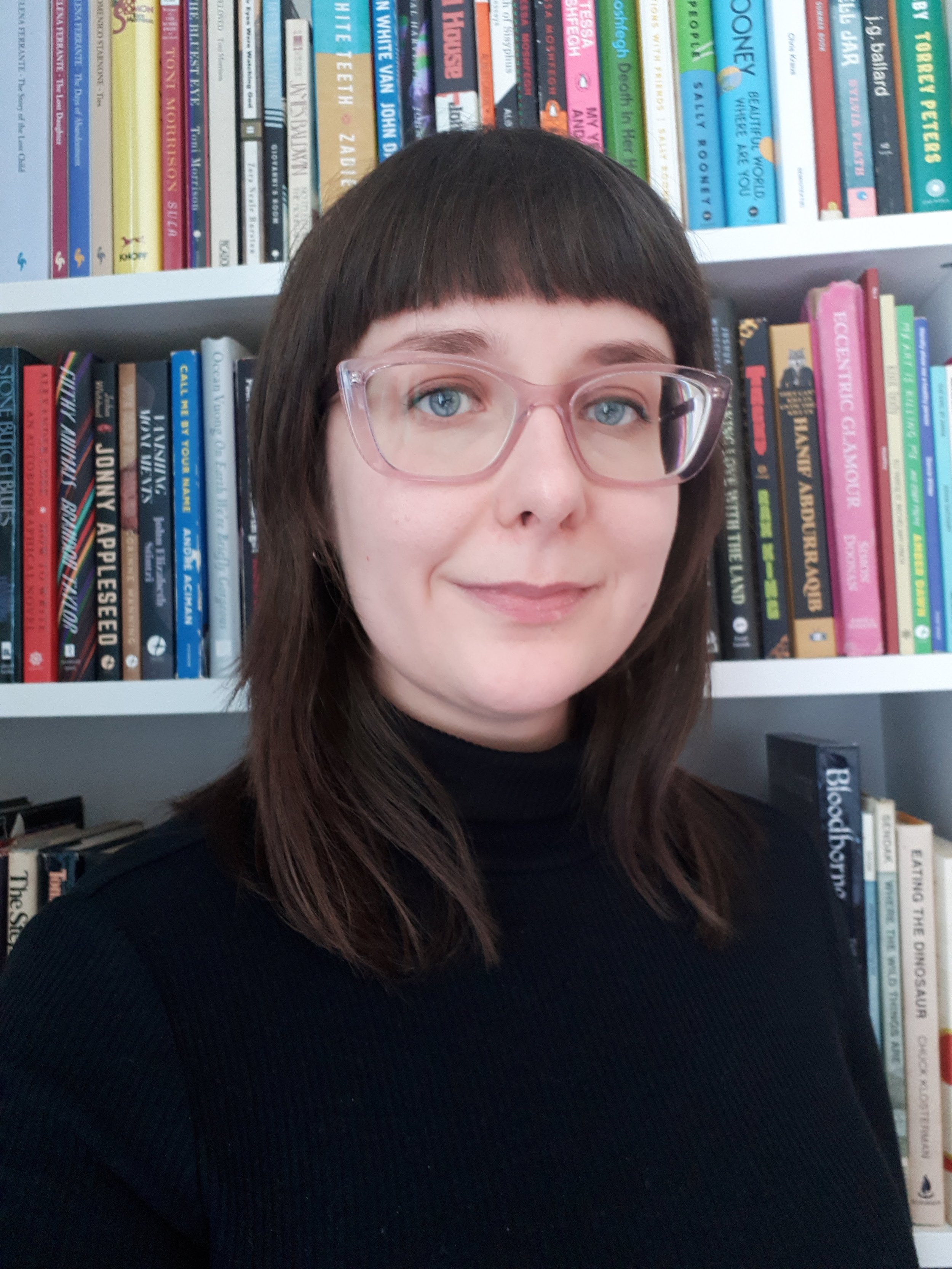Both Sides Now: Review of Hazel Jane Plante’s Any Other City
Hazel Jane Plante, Any Other City
Arsenal Pulp Press 2023. $22.95 CAD.
Order a copy from Arsenal Pulp Press.
Most stories about musicians follow the same handful of plot beats: childhood, rise to stardom, lost years, comeback and a tragic death. Hazel Jane Plante’s second novel Any Other City circumvents this tired narrative to paint a more complete picture of a trans woman musician becoming an artist, having lots of hot sex and healing from trauma. Written as the memoir of fictional indie rock musician Tracy St. Cyr, the book is structured in two sides. Set in 1993, Side A finds Tracy in her early 20s, having just moved to a new city and trying to become an artist. Set in 2019, Side B finds Tracy in her mid-40s returning to the same city following her success as a musician and her public transition.
It’s a clever way to structure a fictional memoir. Rather than playing into a conventional linear narrative, the book showcases Tracy at two separate moments in time, connected by the city they play out in. As Tracy says, “I imagine my memoir as a skyscraper with an elevator that only stops at the twentieth and forty-sixth floors. You get a sense of the other floors, but you don’t have access to them.” This two-part structure not only creates a more unpredictable story, but also helps resist tropes of both music memoirs and trans memoirs. Adding to the uniqueness is the fact that both sections are written in the second person. In Side A, Tracy writes directly to her first girlfriend, while in Side B, she writes to her most recent ex-lover.
The first half of the novel is devoted to Tracy exploring the art world. While she played in bands in high school, she’s more interested in becoming a visual artist than a musician. Tracy strikes up a mentorship with Sadie Tang, a Vietnamese trans artist who teaches at the school Tracy was rejected by. Sadie takes Tracy under her wing, explaining how the artistic process works and how important it is to have a distinct point-of-view.
Tracy’s relationship with Sadie leads her to spending more time with other trans artists, including a group of three musicians in a Riot Grrrl band called Blood Moon. Because of their influence, Tracy picks up a guitar for the first time in years. These women also help Tracy come into her transness in subtle ways by encouraging her to wear a dress and makeup in public. While Tracy frequently projects her gender anxiety onto them, it’s clear that these women see Tracy as trans long before she is able to recognize it in herself.
Side B finds Tracy returning to the same city 26 years later. Now, she’s a successful indie rock musician who has recently parted ways with her lover and band following a traumatic incident. Her return is a refuge for what she can’t deal with at home, a healthy escape after a rough patch. Tracy’s voice comes across very differently in Side B than it does in Side A. In the first part of the novel, she’s timid, unsure of herself and the world. In the second half, she’s brash and strong, confident with the knowledge of the ups and downs of life. Her transition and getting older have allowed Tracy to really know who she is.
While it counters many stereotypes about musicians, Any Other City plays into the steamy erotics of the rock star lifestyle. In Side A, Tracy writes about how her first girlfriend was extremely sexually free, opening Tracy’s mind to toys and public sex. Her confidence was vital to showing Tracy what pleasure looks and feels like. In Side B, Tracy’s on the rebound by having lots of steamy hook-ups, including a long scene in sex club where she learns how to fist at 46, proving you’re never too old to learn something new.
Still, Plante’s greatest strength is the way she writes about art. Peppered throughout the novel are fake movies like Fang Fatale, a lesbian vampire movie starring Jennifer Jason Leigh, and fake bands like The Dalloways and Scurvy Babies. There’s an immersive quality to the way Plante describes the fictional films and songs that makes them feel totally real. Her way of worldbuilding through pop culture, a skill she exhibited in her first novel Little Blue Encyclopedia (For Vivian), is honed even further in this one. It’s a testament to Plante’s strengths as a writer that she is able to create these fictional references that feel like they already exist in our own world.
Sharp readers will be able to spot a few Easter eggs with these details. For instance, “Secret Girls” by Costumes By Edith Head is a fictional song referenced in both sections of the novel, with part of it even being the epigraph of Side A. Likewise, longtime fans will delight at the mention of Chase Abernathy, a fictional Canadian trans visual artist Plante wrote about in her previous novel.
Instead of ending in tragedy, Any Other City is filled with hope for the future. It’s a book about a trans woman who decides to choose love instead of destruction, even if that love is messy and imperfect. It’s a novel about a musician who, at the end of the day, is shown for what she really is: a complete person greater than the sum of her accomplishments.
Alanna Why is a fiction and culture writer from Ottawa. She is the author of the novella Amy Of Suburbia, about a 12-year-old girl’s obsession with Green Day. Her book reviews have appeared in Canthius, PRISM and Minola Review, as well as in her newsletter, Why’s World. She currently lives in Montreal.


